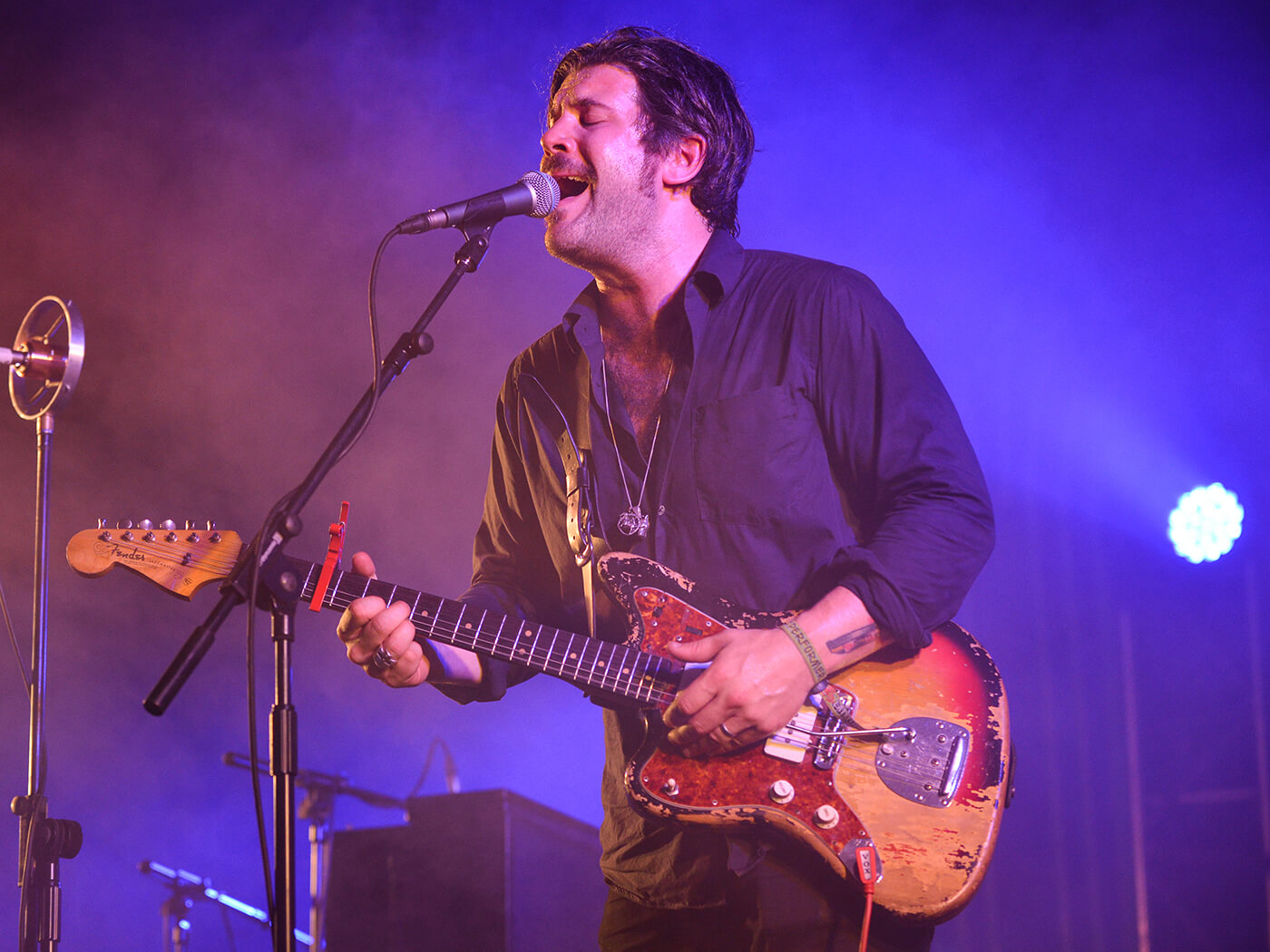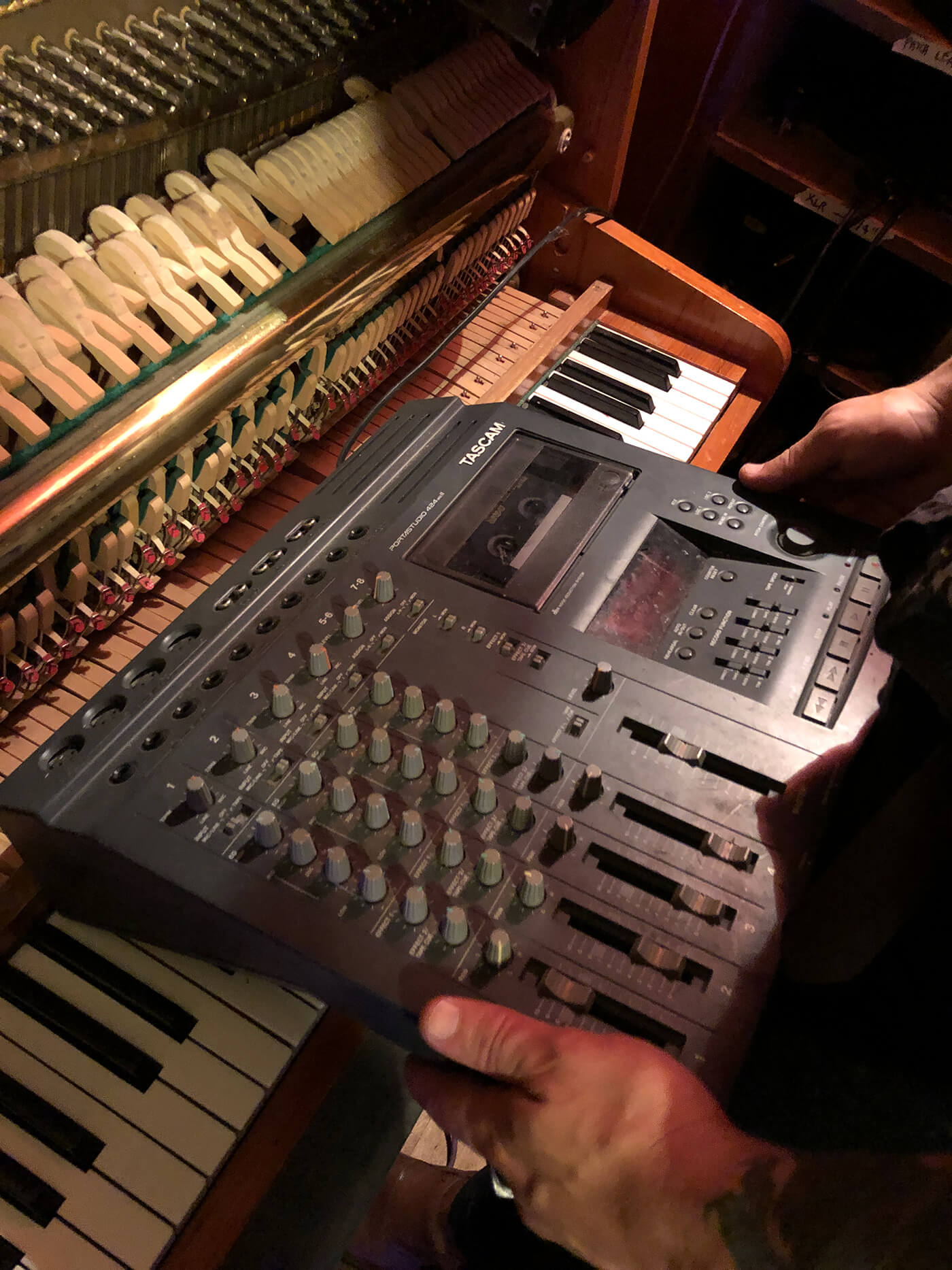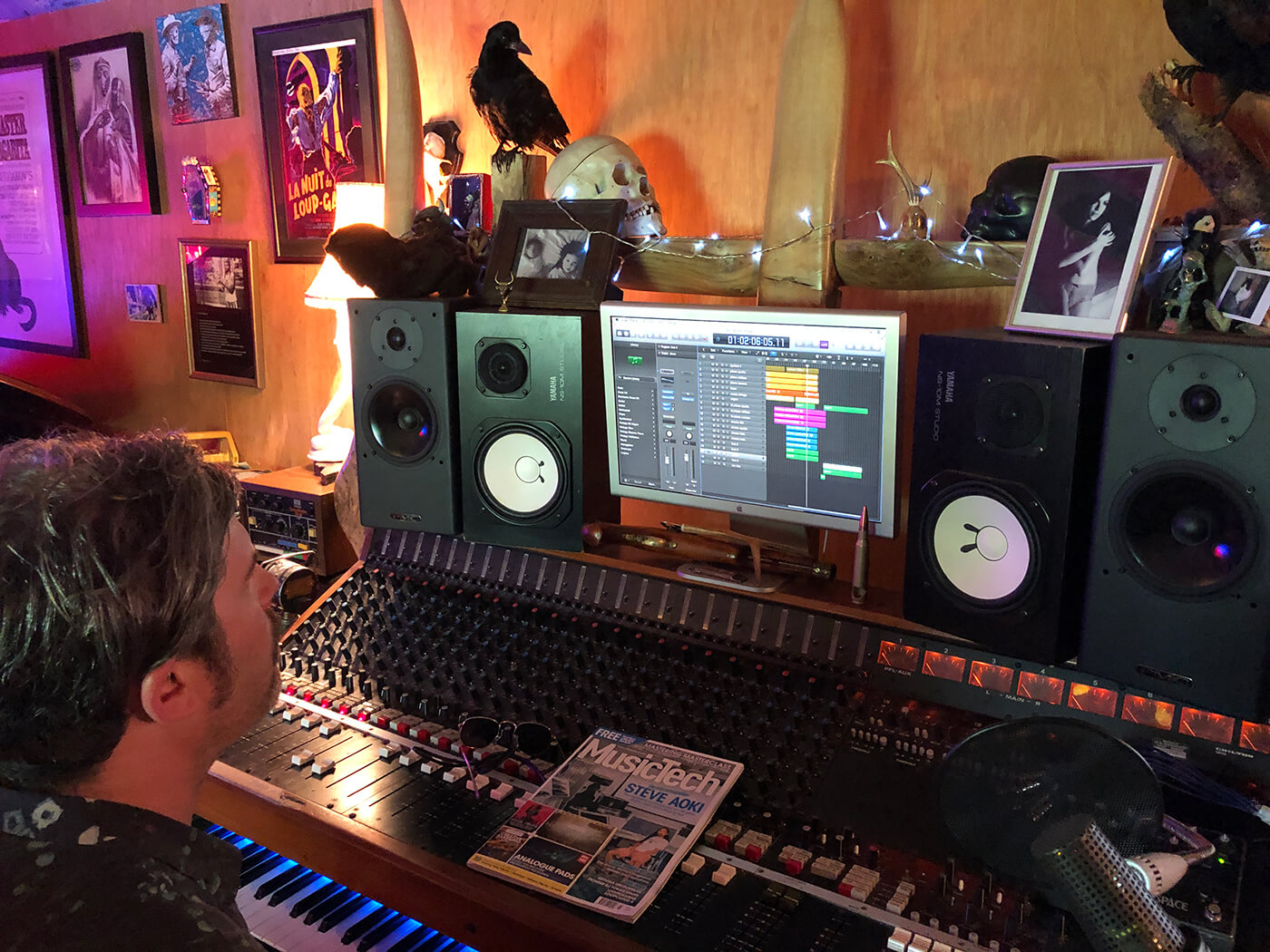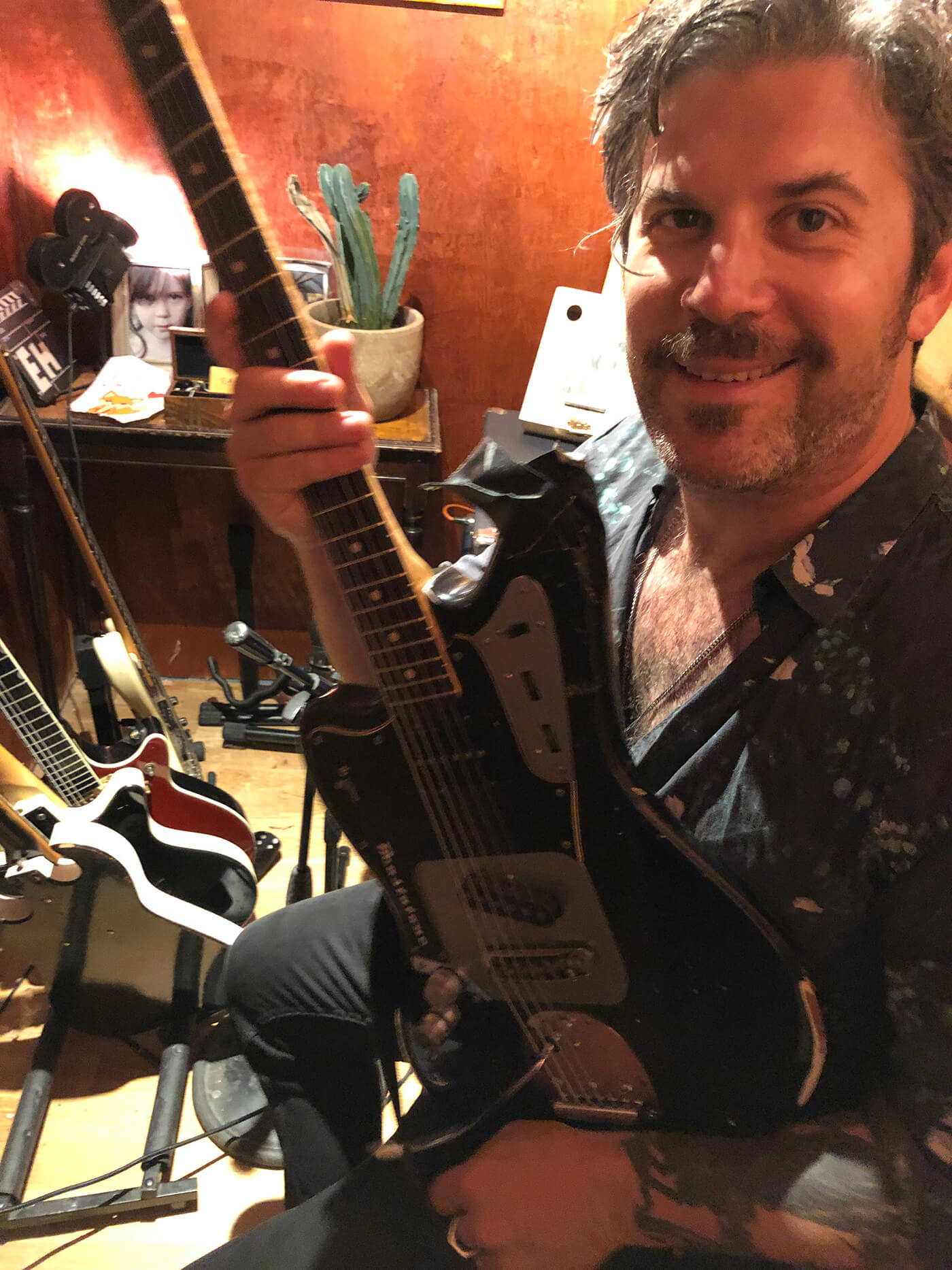Ed Harcourt talks highs and lows of songwriting and collaboration
Ed Harcourt’s songwriting approaches vary depending on whether he’s working with other artists or if he’s writing a solo record. However, having a strong sense of discipline and channelling both positive and negative experiences into the creative process are fundamental.

Image: Andy Sheppard / Redferns via Getty Images
During our exploration of Mercury-nominated singer-songwriter and producer Ed Harcourt’s Oxfordshire studio, the inevitable question arises – about whether modern studio technology is a good thing and whether having unlimited track counts and thousands of instruments at your disposal is beneficial to the process.
Ed’s view is that in the songwriting sphere, less can be more. “I think that if you fundamentally want to be a songwriter, then you need to avoid getting bogged down in the digital world of modern production. Logic I find to be much more creative than Pro Tools, I find it’s really geared for writing. I work in Logic and I do find it very creative, but I did have a period before I wrote Furnaces where I was getting so bogged down in the production. I’d had a bit of a plug-in obsession and was trying to build up this big collection of whatever I could get. I got lost into the maelstrom of hoarding, I was running through dark sonic hallways of digital chaos. I managed to pull myself back out of that. Flood (who produced Furnaces) forced me to re-record every song so it was just me and piano. So I recorded every song stripped back, to see if it worked.”

Ed’s early recordings were captured using a simple Tascam 4-track recorder, a tool that informed the way he thought about structure and sound. “The great thing about using the Tascam was that in a weird way, having that 4-track limitation was really beneficial. Whatever you do on it has to be really good. I think having endless, perpetual options on digital-audio workstations encourages laziness. The phrase ‘fix it in the mix’ is one that I ban in the studio, and I know Flood does, too.
“I’m very much against the words ‘demo’ or ‘rough’ or ‘guide’ as well. I took it to another level when we were making Furnaces. I was like, ‘You can’t say verse, or chorus or guitars, or bass, or drums,’ and if you did, you were required to put some money in a little skull-shaped moneybox. I was the biggest culprit, though and ended up putting in around £50!”
Ed’s DIY approach to production played a role with the arrangements of his early songs. One particular example is the rhythm track of his early single Apple Of My Eye. “Because I was so limited in the early days, I had to basically make a rudimentary drum kit for that song by essentially beat-boxing on mic into the 4-track. I had a rubbish chorus pedal, too, which I put recordings of myself clapping through. Then did another clap and bounced those three tracks to one. Then did the bass, then bounced the piano and the bass together onto one track. Then the guitar, which I probably panned to one corner of the mix, then the vocal and that was it. You were basically committing to mix choices each step of the way with the 4-track.
Everything that you play just has to count. Everything that you do has to be a part that will be heard. There was no room for pads or subtle foundations. I think that’s something that I think I’ve kept with me as I’ve developed in my career, even today. When I have a part on a song – a motif or a hook or a melody or instrument – I’ll make sure that is heard clearly in the mix. I won’t bury stuff. That’s the opposite I suppose of someone like My Bloody Valentine (who I adore) which is more a beautiful wash of sound.”
Creative catalyst
We ask Ed what his typical approach to songwriting is and also how the process differs when writing with other people. “A lot of the time, I’ll see a word that I love. I sometimes just go through my notebook and write titles. I come up with titles and then suddenly, that’ll inspire an idea for how I think that song should sound. That’s certainly one way of doing it. There’s also those events or situations that spark ideas, or something becoming a catalyst. Let’s say I have an argument with someone or I see something that absolutely fills me with joy, I’ll walk away feeling completely compelled to write a song.

“Then there’s the dreamy otherworldly spark; so you’re not necessarily doing anything or thinking anything related to songwriting, then something pops into your head for no reason. It could have been something that’s been lodged in your subconscious for like months. Other times, I’ll just sit and spend hours noodling and faffing around on the piano and I don’t get anything usable song-wise, but other times, I’ll sit down and immediately something melodically interesting comes out.
“With the collaborative writing process, you’re sitting down and building things together. But when people come to me, it’s generally my role to be kind of like the miner in the cave. I have to get the pickaxe and basically go into their soul and find the sparkly diamonds!”
We can imagine that role being fraught with challenges. “Yeah, a lot of how well that works is dependent on how well you get on with someone. I’ll try and spend time talking to someone for an hour before we get into trying to write a song. I try and get a feeling of what they’re about. It can go wrong, though, but most of the time, it works.
“For example, with Paloma Faith, it’s always a smooth process. I started right at the very, very beginning with her. It was 2007 and she came in and we did some writing in a tiny room in my ground-floor flat I had at the time in London. We just clicked and wrote loads of songs. The first song we wrote was fantastic, but it’s never been released, it was called I Won’t Pretend. Shortly after that, we wrote Do You Want The Truth Or Something Beautiful? which became a single and the title track of her debut album. I carried on writing with her after that through her career. She’s like a little sister to me. I love her to bits.
“With songwriting collaboratively, you have to be brutally honest. You can’t keep anything to yourself, you can’t be selfish. You can’t hoard ideas. I even pick out lyrical and musical ideas from my own work if it’s useful or helps make the song we’re working on better. I think it’s really important that songwriters understand that. Be totally open in service of the song.”
Piano man
So how does Ed take those preliminary musical ideas and structure his own songs into workable pieces? “Well, the piano is where I go to to write and structure these days, but when I was recording with simple 4-track technology, I’d actually write music around the drums a lot. I’d arrange it as I went by changing up the drum patterns for different sections, then add the musical ideas after I’d defined that structure. I know that’s quite unusual, but you have your arrangement immediately locked down and you’re ready to go.”
But there’s surely got to be times when nothing seems to be working, when ideas don’t seem to gel and inspiration dries up? “Well, I think for me having a deadline – even a self-imposed one – is really, really important,” Ed says “Particularly now I’m older. That’s why when I’m co-writing, I’m very particular that the time frame is like 11am to 6pm. Then I have to make my apologies and end the session as I’m also a dad and want to spend time with my kids. If I’m left to my own devices these days, it can take a long time.”

There’s also the nature of transforming the often negative events, disappointments and worry into your work, which Ed is open about sharing “I didn’t write anything for myself after Furnaces was released for around 12 months. Me and my family moved out here and then Polydor stopped funding my record just three months after it came out. That time was very difficult for me as an artist. I’d put four or five years of my life into it. On and off working with Flood. I really had a huge vision for it, so it was very frustrating. I didn’t realise it until after I made my instrumental record Beyond The End, but I’d actually gone into a weird space. I literally just felt very flat. I’d poured it all out into this new project. So writing instrumental music was a really therapeutic, good thing for me to do. Once I’d done it, I was back to normal.”
From every sphere
So to those reading who are developing their songwriting skills, considering embarking on a career or are facing creative problems at the moment, what key advice does Ed give? “I’d say be fluid, be open. I don’t actually think there are any rules with songwriting per se, but there are methods. I think you can’t force yourself to use a certain method to write songs. But the best thing about songwriting is to utilise the environment and circumstances you are in. Use where you are and where you’ve come from and what your situation is to your benefit is how you create.”
Ed elaborates: “When I was living in that old house making my first record, with nobody else around me, I was isolated with a 4-track tape machine and one mic. That was how I started writing songs properly. That’s what inspired me – that situation. I didn’t deliberately put myself in that situation, but being there informed the songwriting process. It’s about where it starts. Throughout your whole life as a songwriter, you need to tame that perspective. You need to always remember being in that first little room, starting out. You need to feel like you don’t know anything and that’s the only way to create I think. And always be receptive to new ideas, approaches and strategies.
“I’ve learned new things from writing with other people, and some writers who are 20 years younger than me. You need to be a sponge. It’s the nature of being a songwriter, you’re just logging everything in your head. I’m always producing different people and working with different people. I’d like my spectrum to be even broader, to be honest. As long as I think it’s good, and has something to say and moves you.”
Rise above this
One of our personal favourites of Ed Harcourt’s songs, the cinematic, romantic (and doom laden) Until Tomorrow Then serves as a perfect example of how the texture of the sound can dictate the flavour of a song. As Ed says: “I had a song which I’d written on piano called Until Tomorrow Then. The original arrangement was very ‘glam’ and a little bit of a throwback. I knew the song was good, but the sound of it wasn’t right and I didn’t want it to be piano-oriented. We were making my fourth record The Beautiful Lie and recording at Jeremy Stacey’s studio. He had so much amazing gear. We went in there and he showed me the Optigan – which is this vintage electronic keyboard that you load with 12-inch program discs containing vintage recordings, it’s a precursor to modern sampling in a way. I was tinkering with it and I found this amazing sound on a disc called Romantic Strings which I instantly realised was exactly the kind of feel I wanted for Until Tomorrow Then.
“The inversion of the notes just sounded a lot cooler than what I was playing on piano and so the song was saved, in a way. I’ve had so many ideas that I’ve known were good but I just couldn’t get to sound right. So when I found that sound for Until Tomorrow Then, I was very relieved.
“I’d written a few love songs about the end of the world. I guess it’s the idea of the world cracking, with lava flowing and everything’s falling into the ocean and everything’s dying. But the lyrical protagonist is saying, ‘Oh well, at least I’m with the person that I love. I wanted it to sort of sound a bit like The Shining or something, it’s got a woozy nostalgia to it. The problem is, once you’ve used a unique sound like that, you can’t really use it again!”
Follow Ed on Facebook and Twitter. Read the rest of our interview with Ed here. And for more interviews, check here.